加茂田 章二/Kamoda Shoji
加守田章二は20世紀後半に活躍し、50歳を目前にして夭折した陶芸界の鬼才です。
1933年、大阪府岸和田市に生まれた加守田は、京都市立美術大学工芸科陶磁器専攻にて、陶芸家の富本憲吉(1886〜1963)や近藤悠三(1902〜1985)の指導を受けました。卒業後、1959年に栃木県益子町で独立すると、学生時代から取り組んでいた灰釉の作品を手がけ、独自の作風を築きあげていきます。口造りが薄く、独特の緊張感を持つ加守田の器は異彩を放っており、益子焼の民芸調と相いれないこの造形を否定的に見る向きもありました。しかし、当時民芸運動を推進していた濱田庄司(1894〜1978)に注目され、1966年の個展では灰釉の集大成とも呼べる作品群を発表したことで評価が高まっていきました。その翌年から、作品は土肌の表情がより豊かで重厚感のあるものへと変容し、1969年には岩手県遠野市を本拠地とし、遠野の新しい土で制作や研究を進めました。1970年代に入ると、縄文土器を思わせる波状の曲線文様から色鮮やかな彩陶波文、一転して色彩を抑えた不定形文様など、激しい振り幅で作風を変化させていきました。そして、1979年からは遠野を離れ、東京都東久留米市に制作環境を移します。その後、白血病を患ったため同地での活動期間は長く続かなかったものの、半磁土を用いて新たな意匠を試みていたことからは、次なる創造の地平を切り拓こうとする加守田の意欲が窺えます。
独立後の作陶期間はわずか20年ほどでありながら、加守田の作風は目まぐるしい変化を遂げました。その一方、様々な技術を駆使しながらも、決して技巧に流れなかった一連の作品は、土の持つ根源的な力をまっすぐに見据える加守田の、その純粋で剛直な作陶のスタンスを内包しています。
Shoji Kamoda, a prodigious figure in the world of ceramics, made his mark in the latter half of the 20th century and tragically passed away just before his 50th birthday.
Born in 1933 in Kishiwada, Osaka Prefecture, Kamoda received his education in ceramics at the Department of Ceramic Arts at Kyoto City University of Arts, where he studied under the renowned ceramic artists Kenkichi Tomimoto (1886-1963) and Yuzo Kondo (1902-1985). After graduation in 1959, he established his independent career in Mashiko Town, Tochigi Prefecture. There, he continued to work on ash glaze ceramics, a pursuit he had undertaken since his student days, and developed his unique artistic style. Kamoda’s pottery, characterized by its thin lip and unique tension, stood out conspicuously, and some viewed this unconventional form in contrast to the folk-art style of Mashiko-yaki as negative. However, he began to gain recognition when he caught the attention of Shoji Hamada (1894-1978), a prominent figure in the folk craft movement at the time. In his solo exhibition in 1966, Kamoda presented a remarkable collection of ash glaze pottery, which earned him increasing acclaim. Starting from the following year, his artworks underwent a transformation, becoming richer and more substantial in their earthy texture. In 1969, he established his base in Tono City, Iwate Prefecture, where he continued his creative work and research using the new local clay from Tono. Entering the 1970s, his artistic style underwent dramatic shifts, ranging from wave-like curvilinear patterns reminiscent of Jomon pottery to vibrant polychrome wave motifs, and then transitioning to irregular patterns with subdued colors. Then, in 1979, he left Tono and relocated his creative environment to Higashi-Kurume City, Tokyo. Although his time in this location was relatively short due to battling leukemia, his ambition to explore new horizons in his creative journey was evident through his experimentation with half-porcelain clay.
Despite a relatively brief career as a potter spanning about 20 years after gaining independence, Kamoda’s artistic style underwent rapid changes. On the other hand, a series of works that never drifted into mere technical prowess, while utilizing various techniques, encapsulate Kamoda’s pure and unyielding approach to pottery, where he unwaveringly focused on the fundamental power of clay.
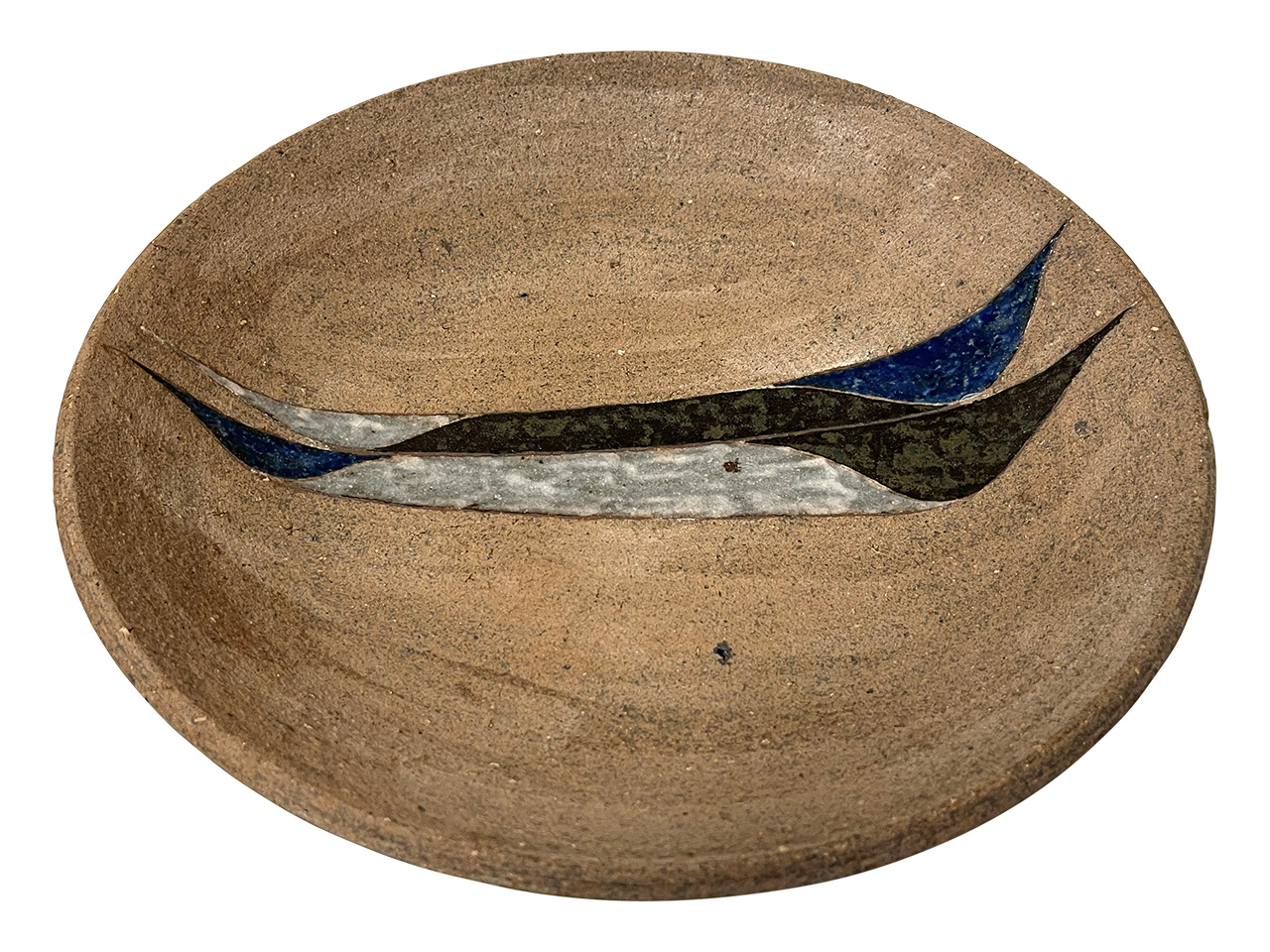
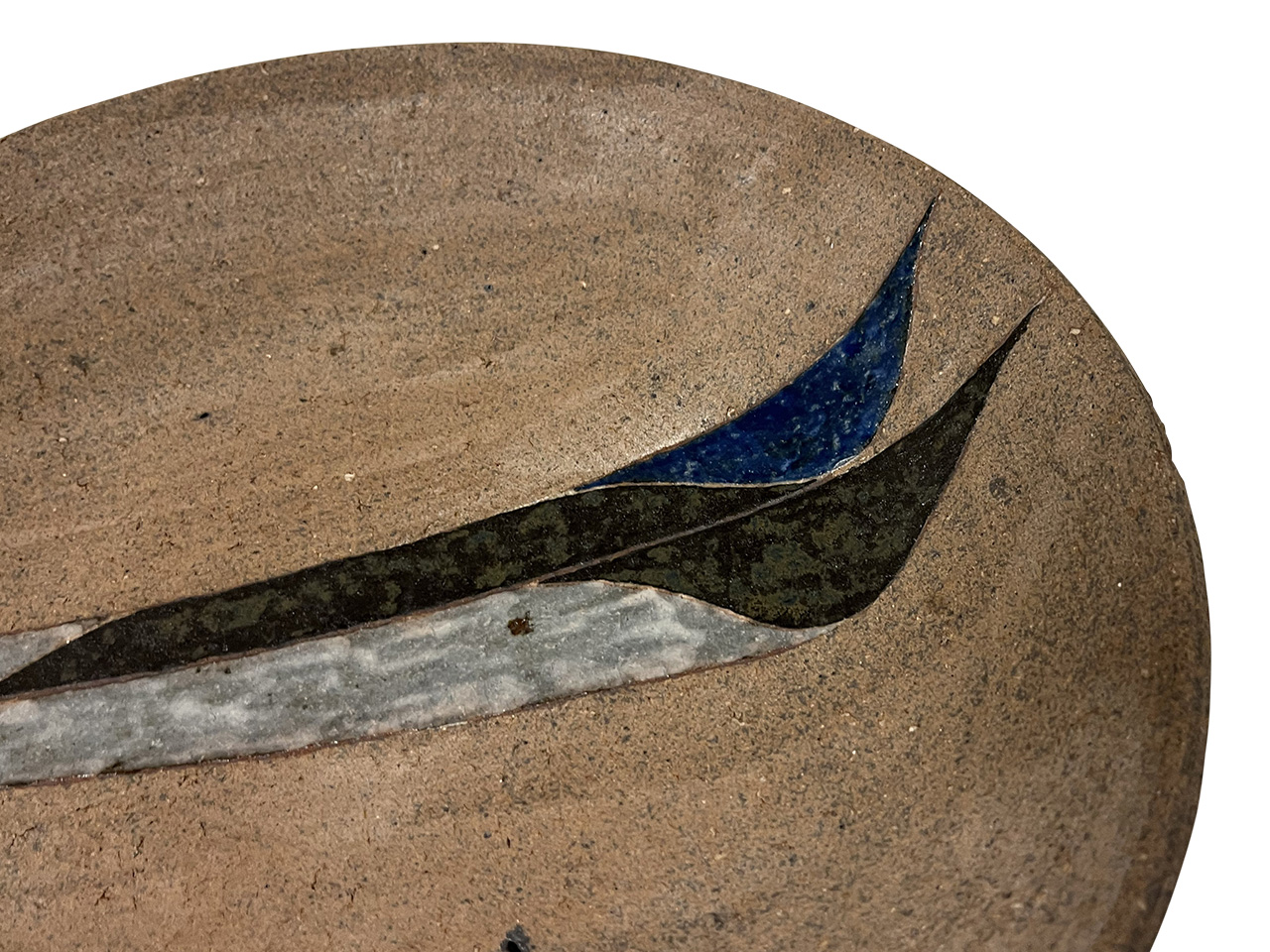
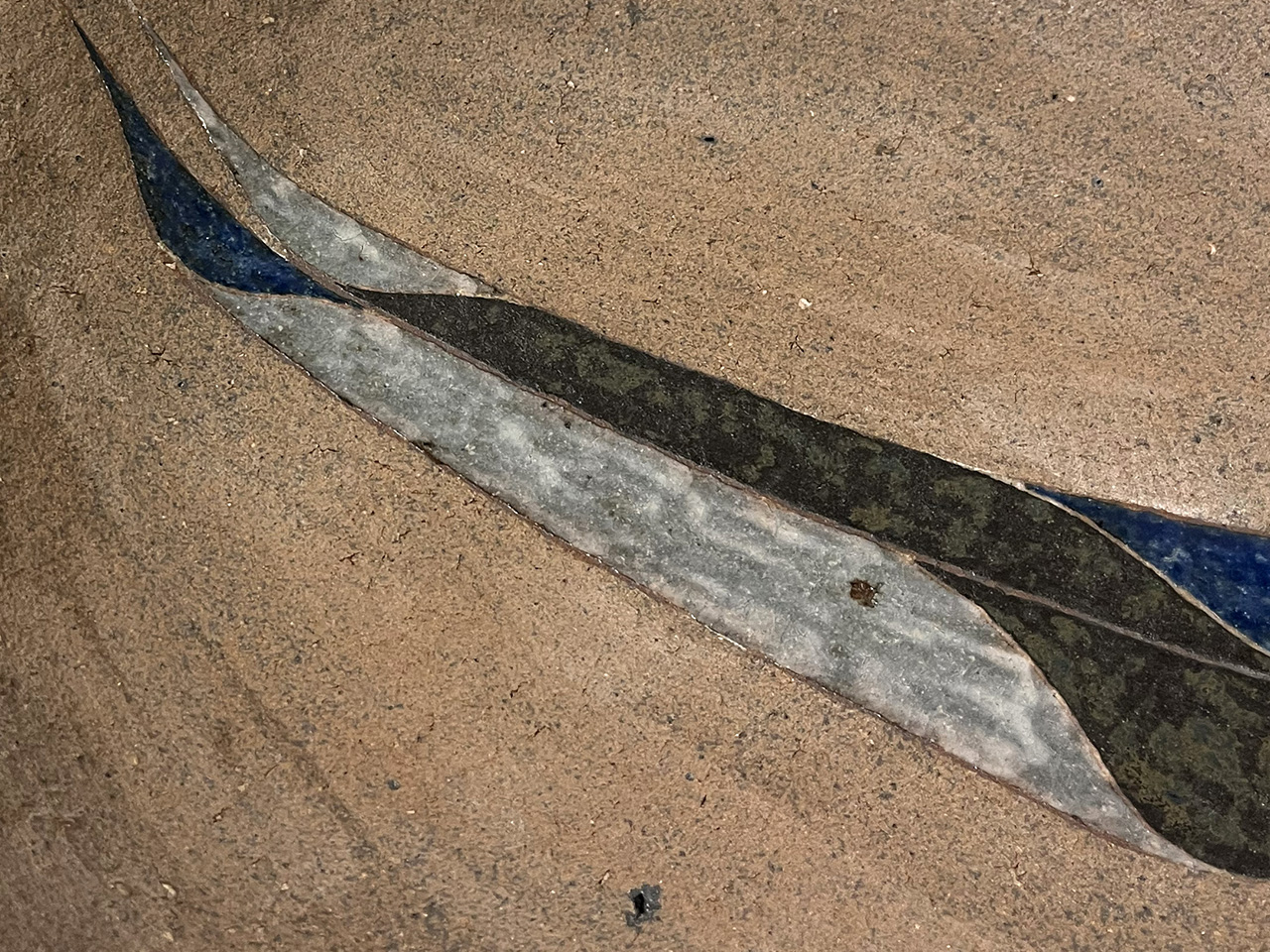
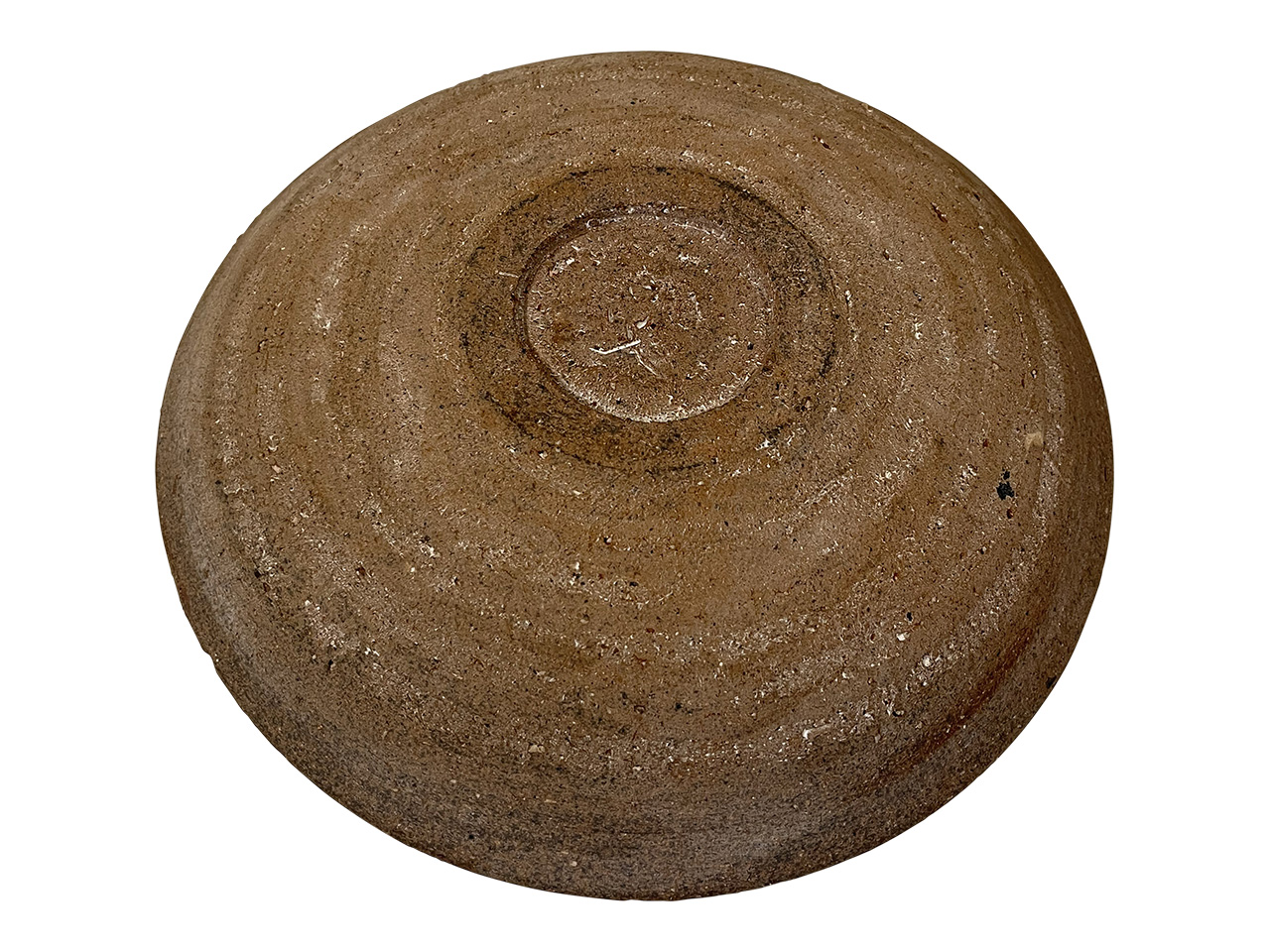
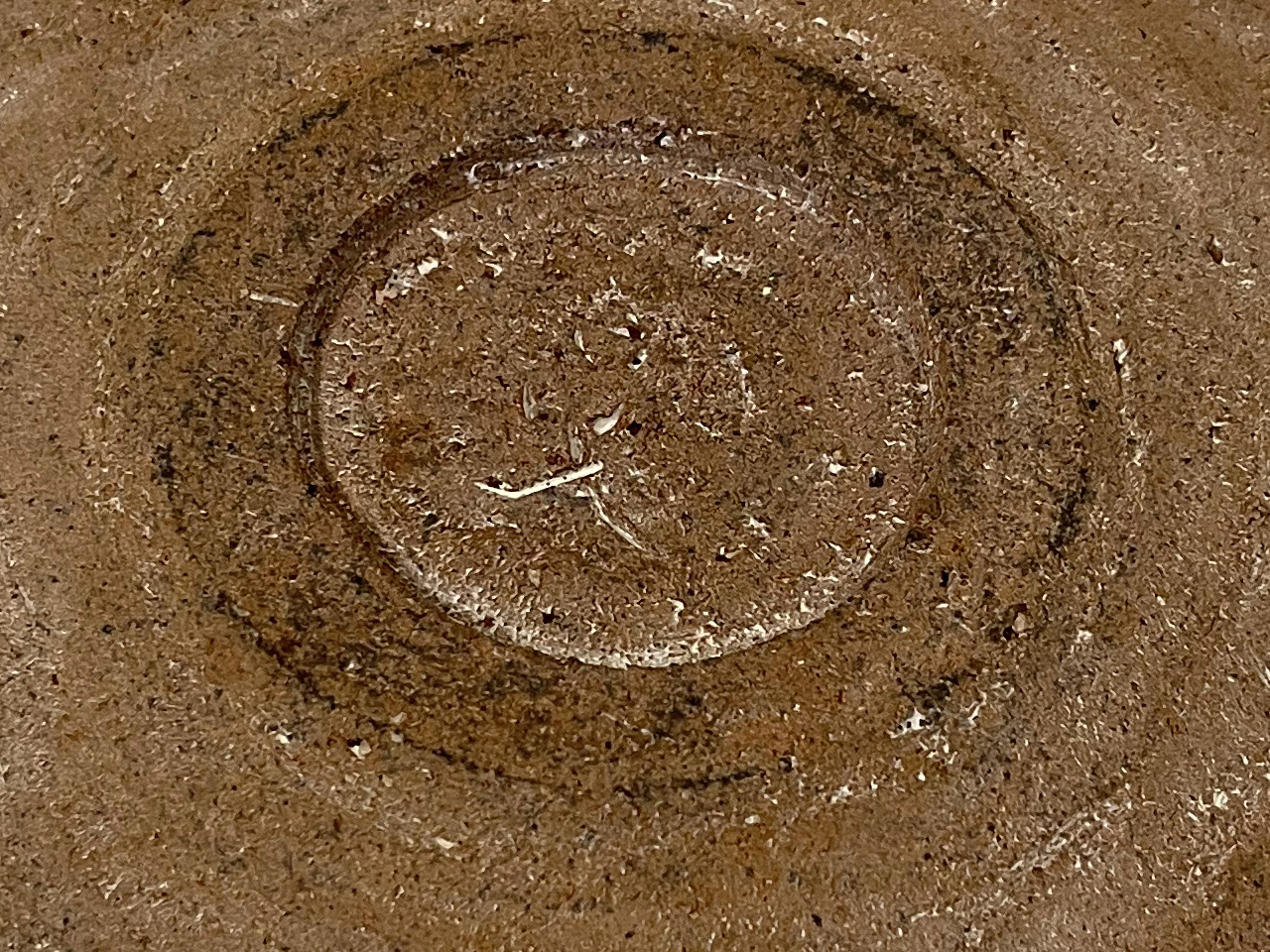
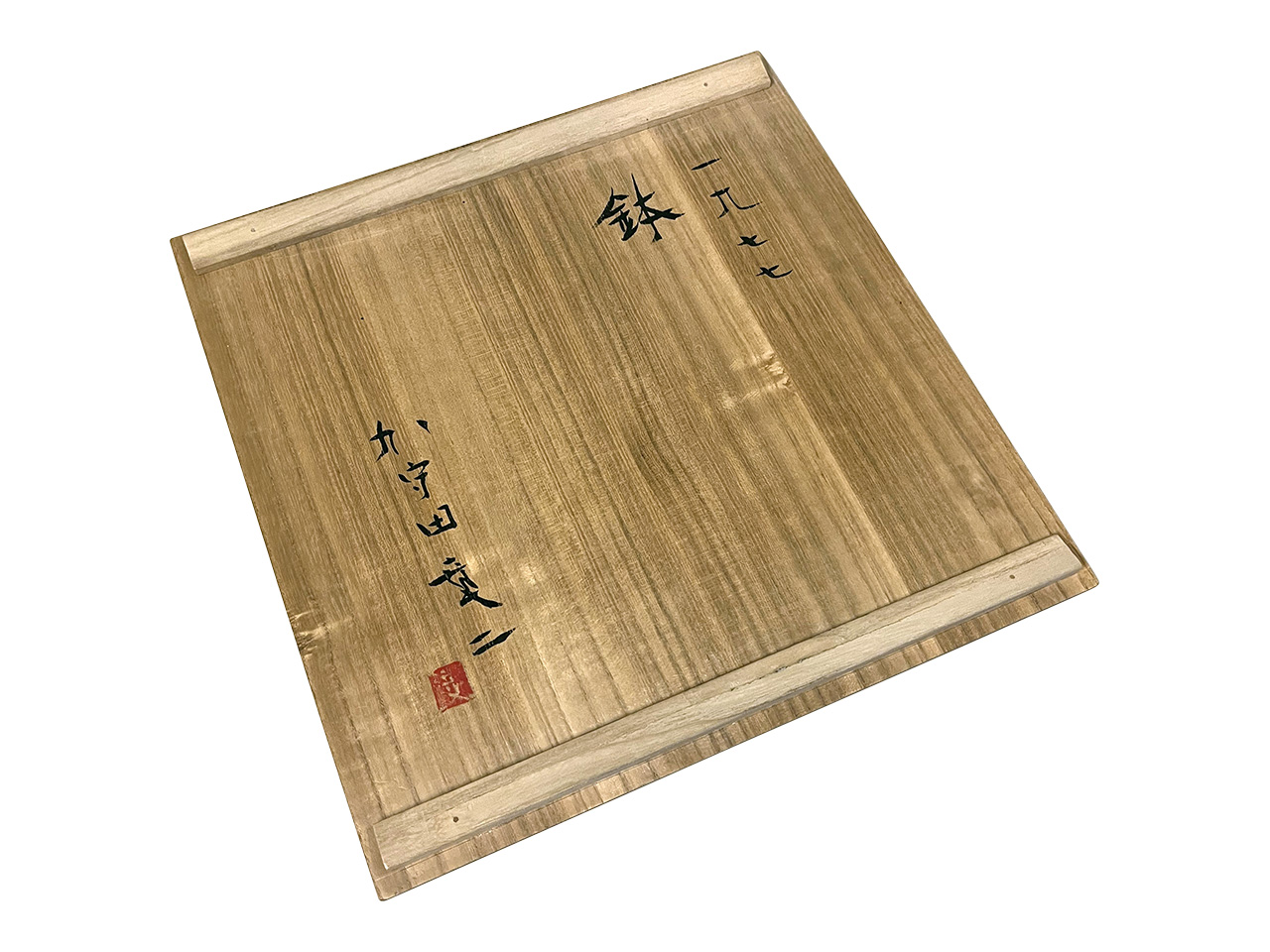
作品名:一九七七 鉢
サイズ:H5.8×W33cm(「加茂田章二の芸術」世界文化社刊:No169に掲載)
価格:SOLD OUT
価格は税抜き表示です

